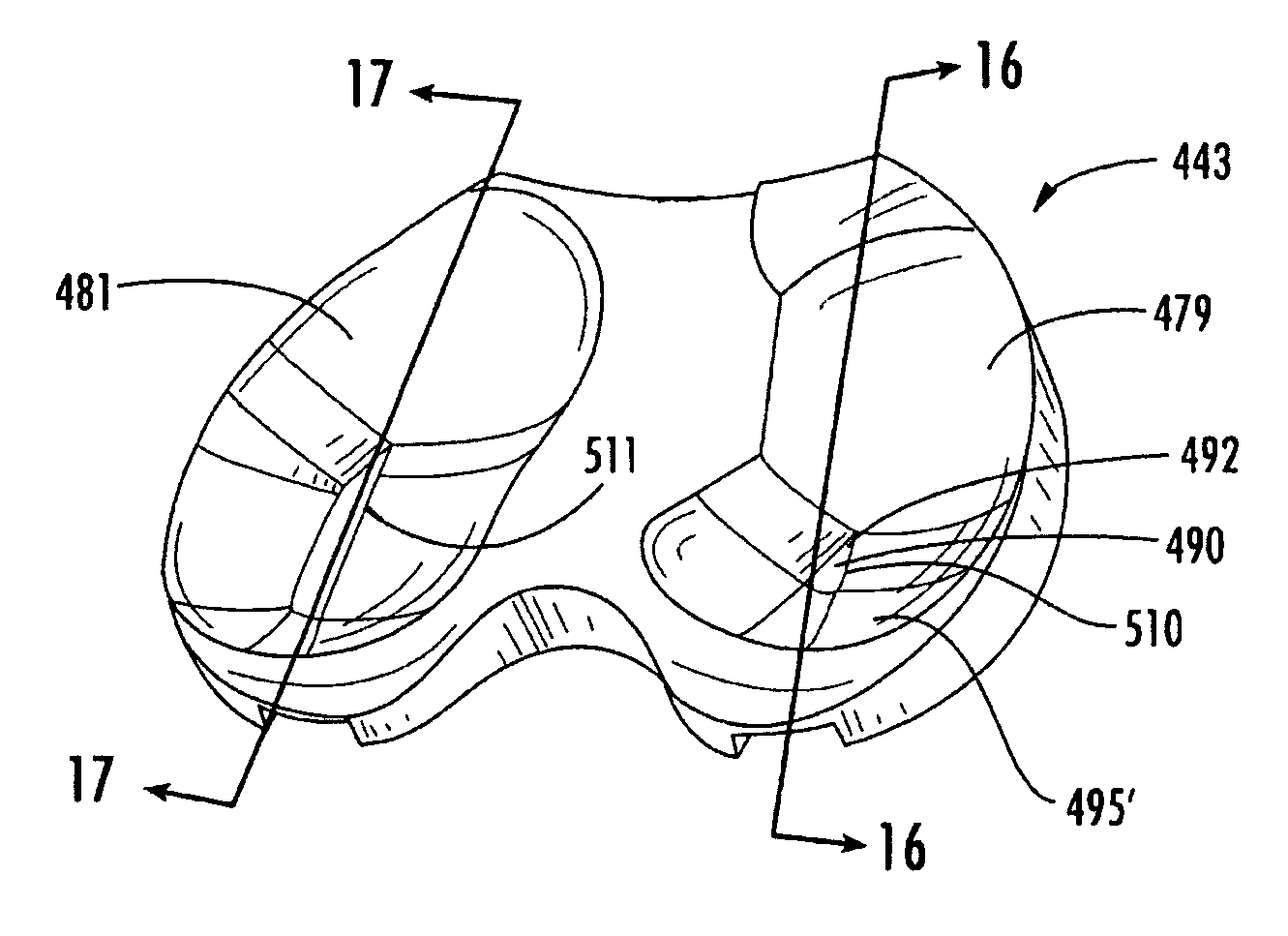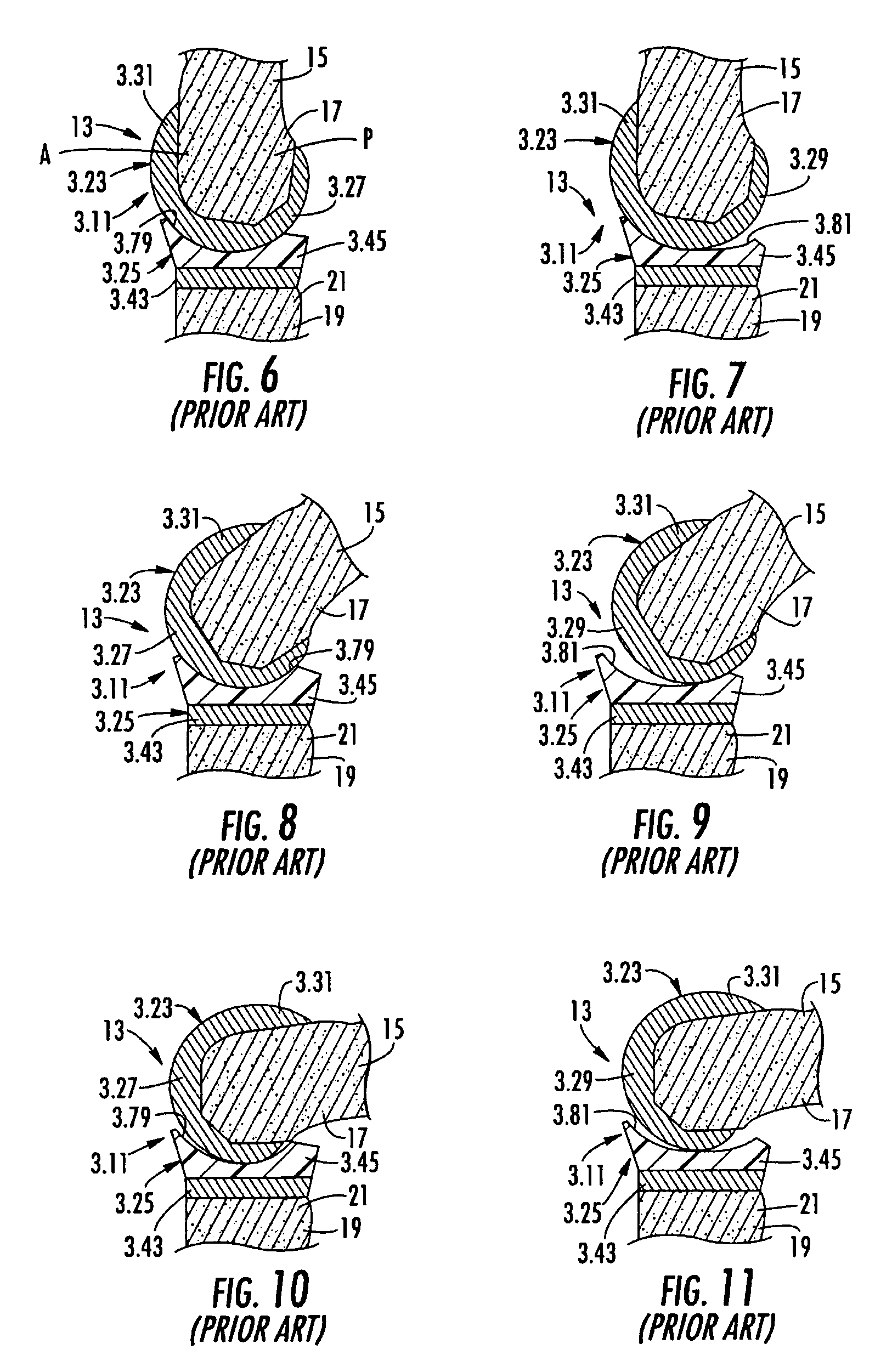Tibial knee prosthesis
a knee and prosthesis technology, applied in the field of knee prosthesis, can solve the problems of complex knee kinematics that are difficult to replicate, increase the complexity of knee kinematics, and combine shifting and pivoting of the femur
- Summary
- Abstract
- Description
- Claims
- Application Information
AI Technical Summary
Benefits of technology
Problems solved by technology
Method used
Image
Examples
Embodiment Construction
[0034]The present invention now will be described more fully hereinafter with reference to the accompanying drawings, in which some, but not all embodiments of the invention are shown. Indeed, this invention may be embodied in many different forms and should not be construed as limited to the embodiments set forth herein; rather, these embodiments are provided so that this disclosure will satisfy applicable legal requirements. Like numbers refer to like elements throughout.
[0035]The invention is an improvement to the prior art medial pivot knee described in commonly assigned U.S. Pat. Nos. 5,964,808 and 6,013,103. The knee prosthetics taught by these patents will now be briefly described herein for context with respect to the exemplary preferred embodiment.
[0036]The knee prosthesis 3.11 is designed to replace at least a portion of a knee joint 13 between a distal end 17 of a femur 15 and a proximal end 21 of a tibia 19, as shown in FIGS. 6–11. The femoral component 3.23 includes, in...
PUM
 Login to View More
Login to View More Abstract
Description
Claims
Application Information
 Login to View More
Login to View More - R&D
- Intellectual Property
- Life Sciences
- Materials
- Tech Scout
- Unparalleled Data Quality
- Higher Quality Content
- 60% Fewer Hallucinations
Browse by: Latest US Patents, China's latest patents, Technical Efficacy Thesaurus, Application Domain, Technology Topic, Popular Technical Reports.
© 2025 PatSnap. All rights reserved.Legal|Privacy policy|Modern Slavery Act Transparency Statement|Sitemap|About US| Contact US: help@patsnap.com



